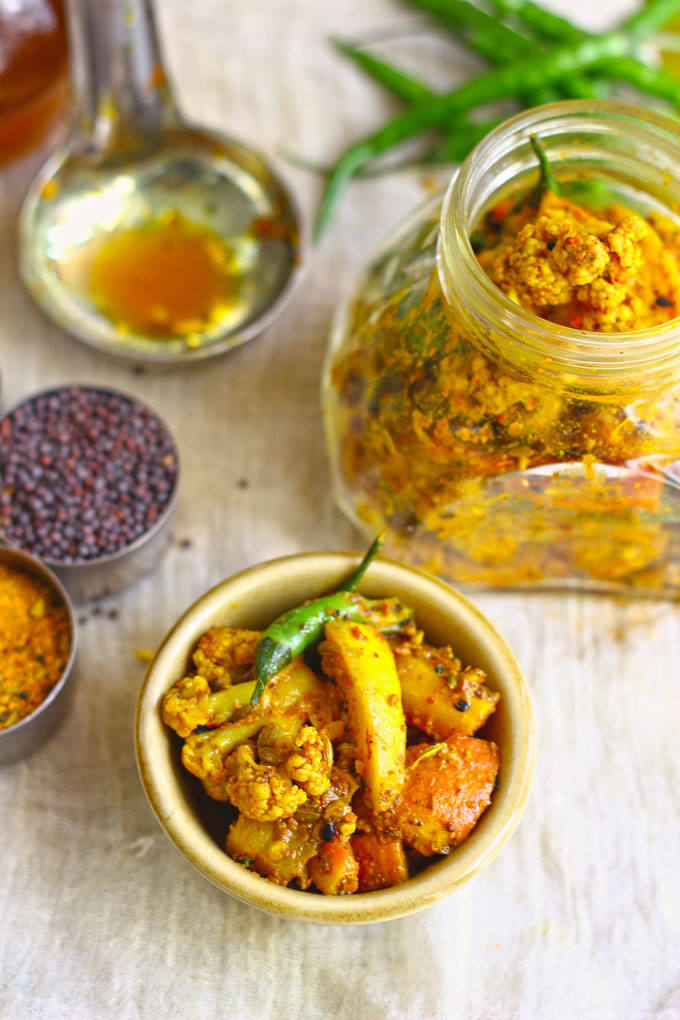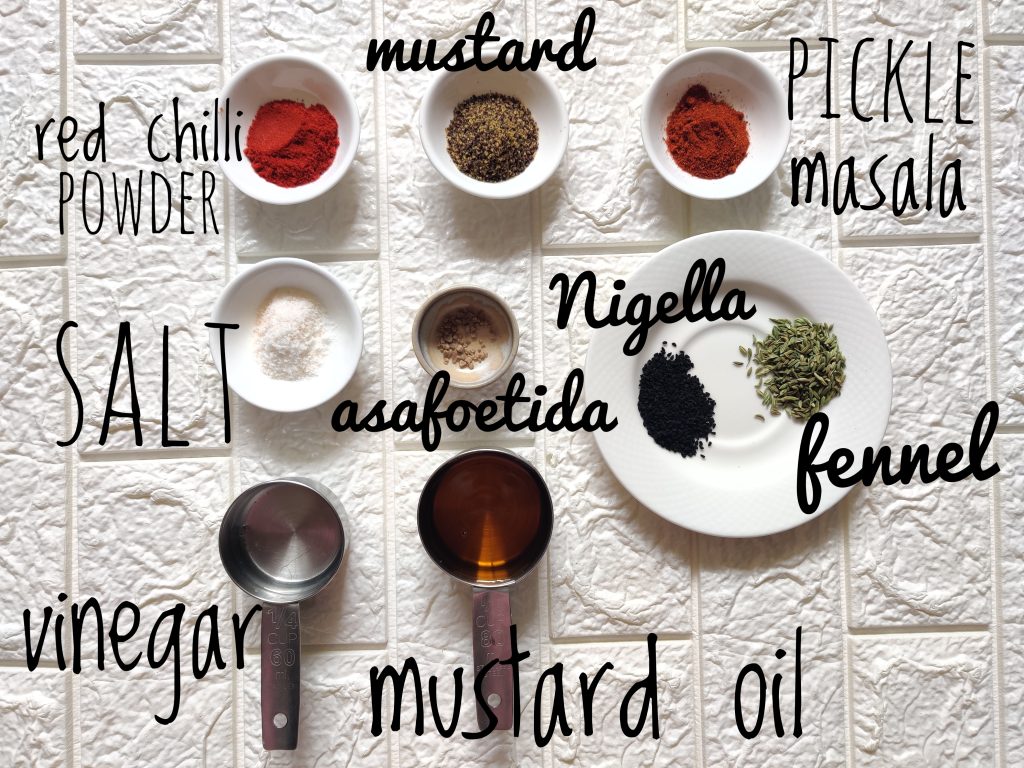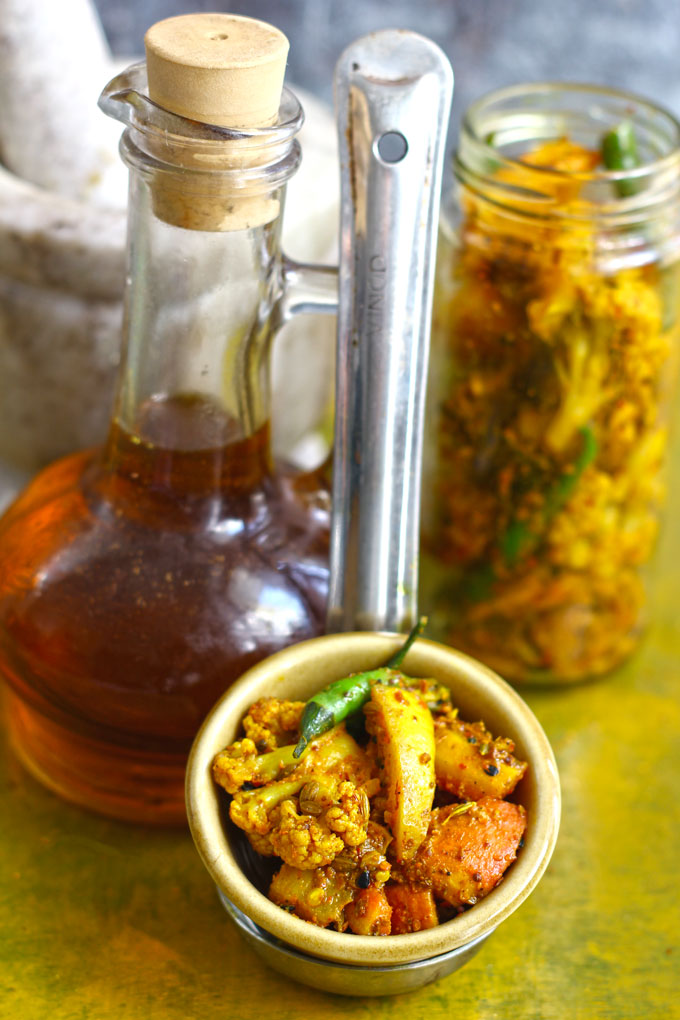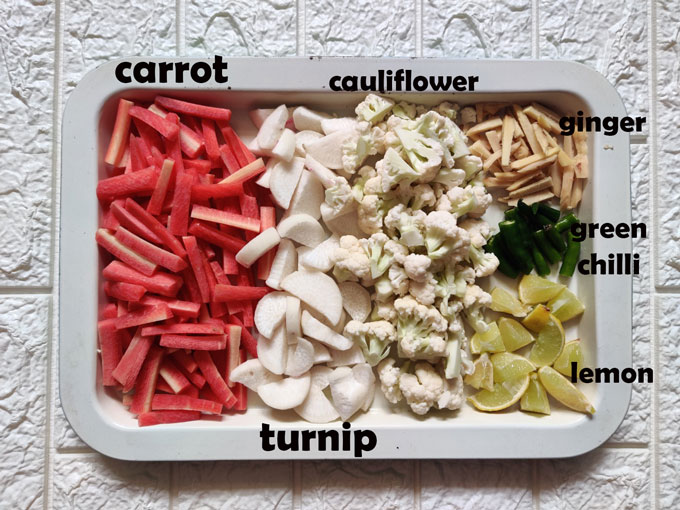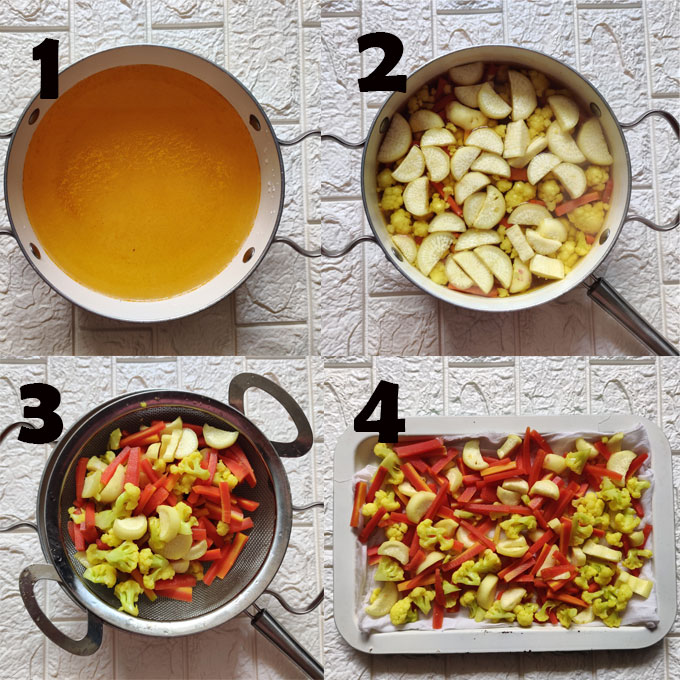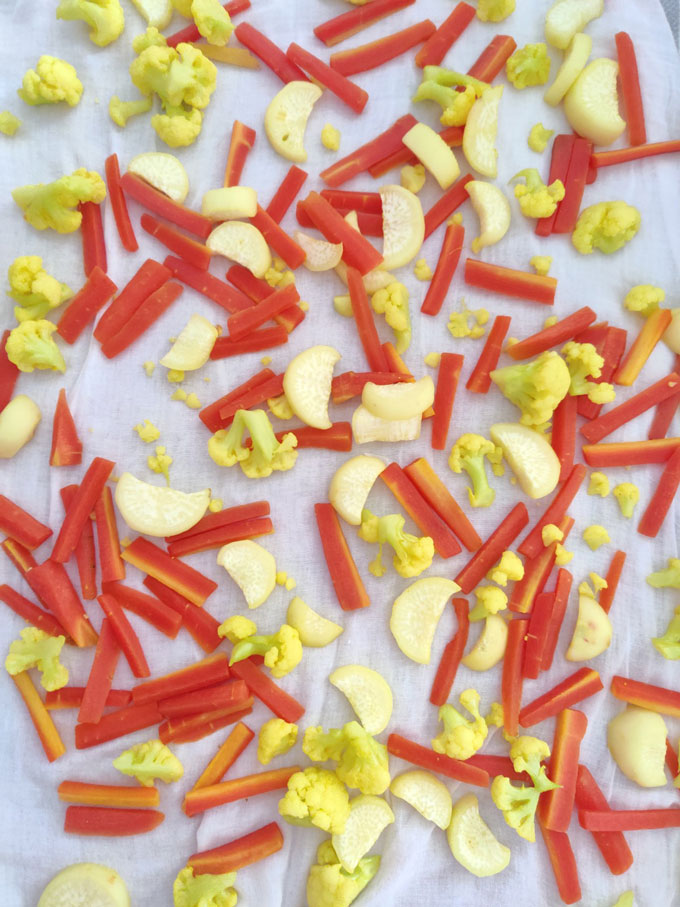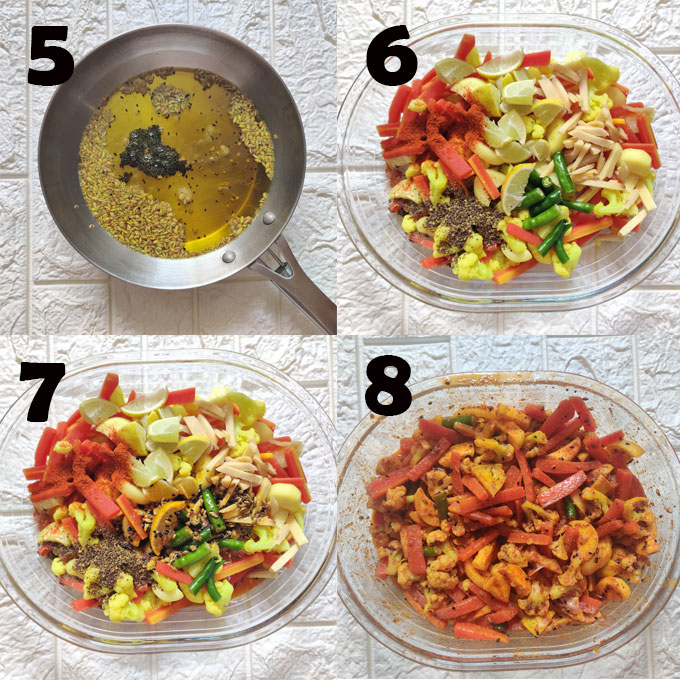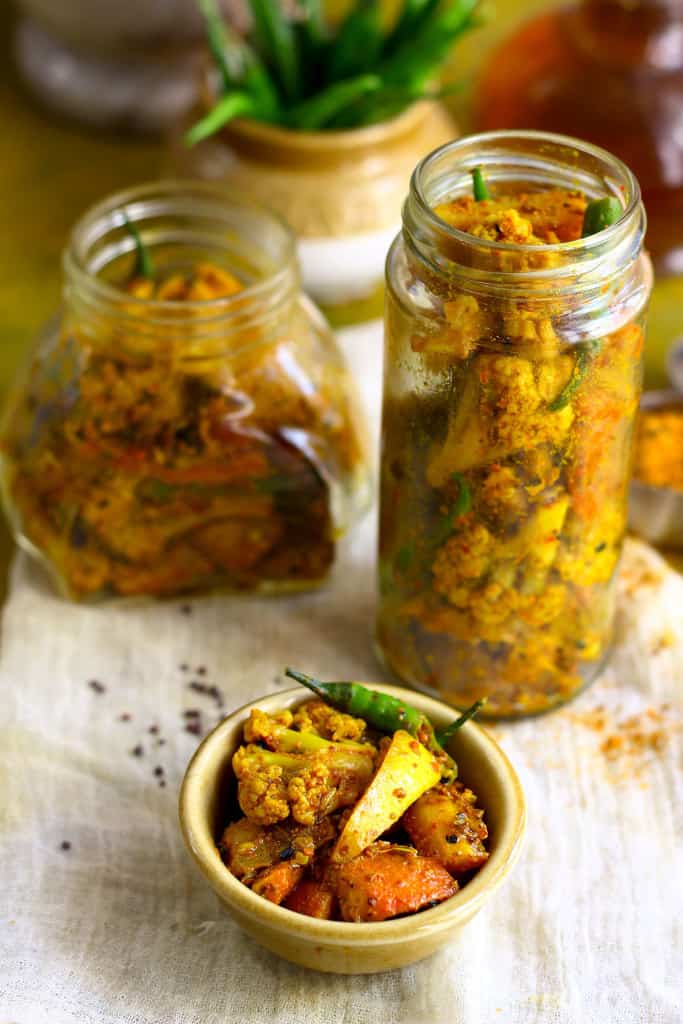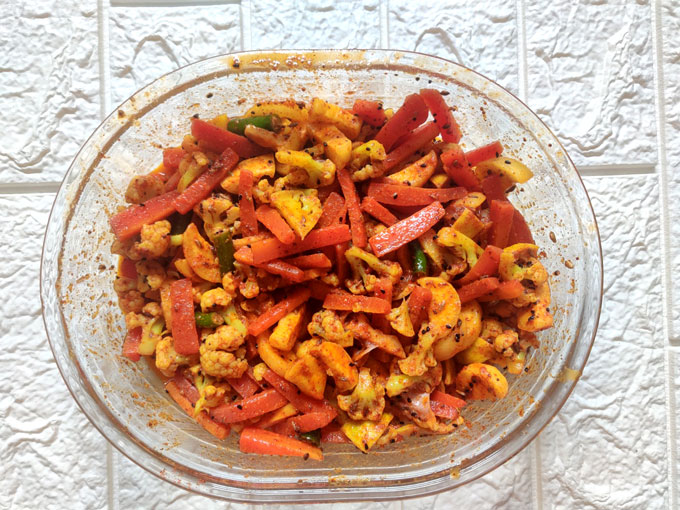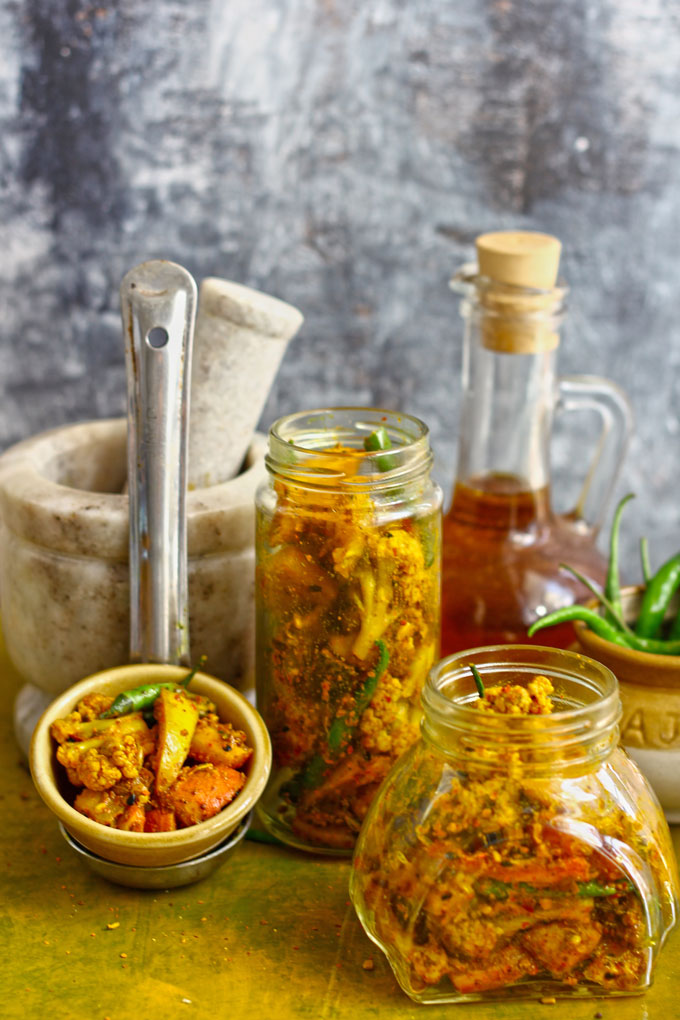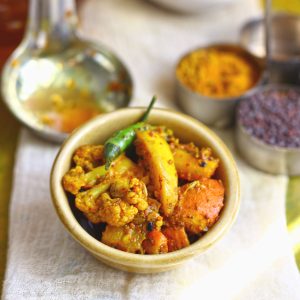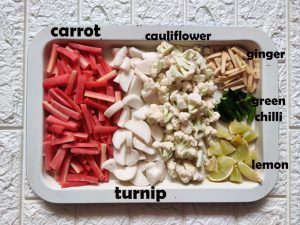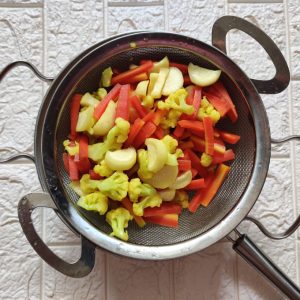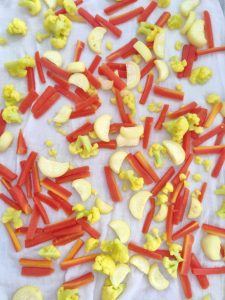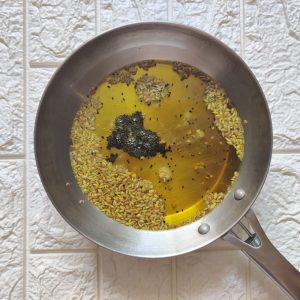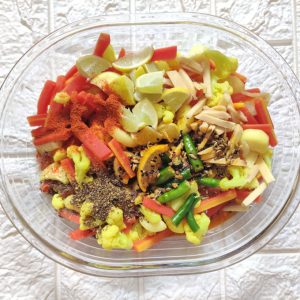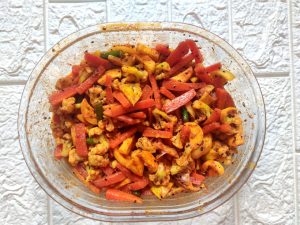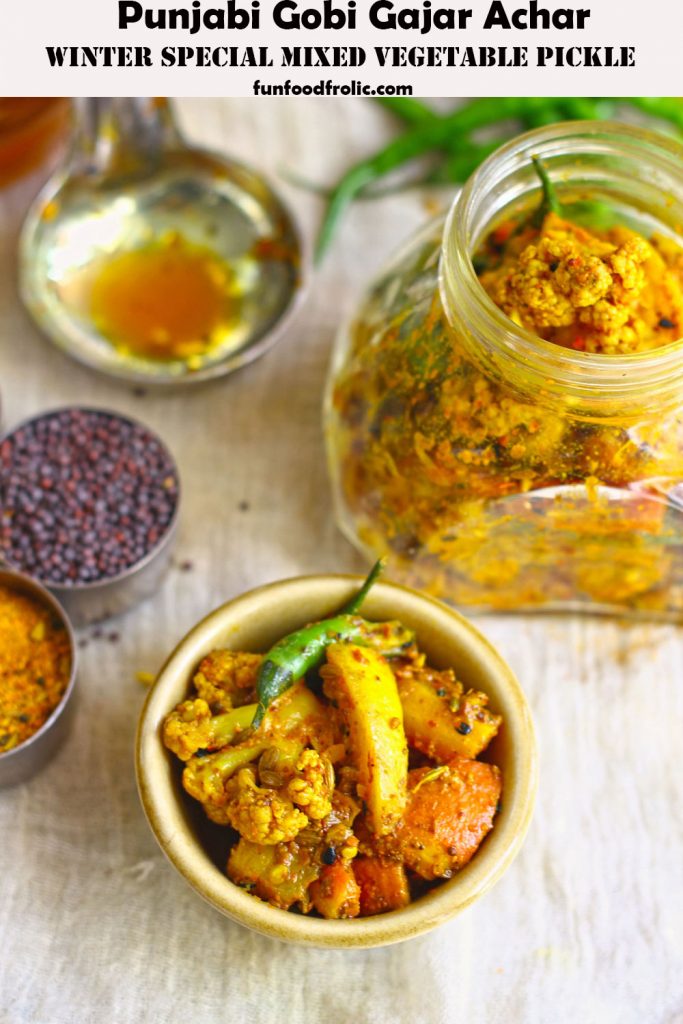The Pickle Story
In India, pickling is one of the most commonly used techniques to preserve seasonal fruits, vegetables, and berries. We have pickle recipes for every mood and season of the year. Gobhi Gajar Ka Achar is a popular winter pickle recipe from North India. Also known as gobi gajar shalgam ka achar. ‘Gobi’ = Cauliflower, ‘Gajar’ = Carrot, ‘Shalgam’ = Turnip. It is a sweet and spicy instant pickle made with colourful winter vegetables – cauliflower, red carrot, turnip, ginger, lemon, and green chillies. This mixed vegetable pickle is a staple condiment made at every home in Northern India during the winter (November – February). Every family has its own mixed vegetable pickle recipe passed on from generation to generation. This pickle is undoubtedly one of the most delicious ways to relish winter vegetables. I am sharing with you my mother-in-law’s signature recipe.
Ingredients Required
You need a few staple ingredients to make gobhi gajar ka achar from scratch at home.
Vegetables: My family combines cauliflower florets, carrots, turnips, ginger, lemon, and green chilli to make this Punjabi mixed vegetable pickle. Feel free to skip radish or turnip if the aroma and taste are too much for your senses. Mustard Seeds (Rai): The tiny black mustard seeds, also known as rai, are the key flavouring ingredient for gobhi gajar ka achar. Gently crush the seeds using a mortar and pestle. Spices: Salt to taste, turmeric powder, red chilli powder, asafoetida (thing), fennel seeds (saunf), and nigella seeds (kalonji/onion seeds). Pickle Masala: I add homemade achaar masala to this gobi gajar pickle. It is optional. But makes a lot of difference to the taste of the pickle. You can use readymade or packaged pickle masala as well. Mustard Oil: The pungent taste and luscious texture of mustard oil are the soul of Indian pickles. There is no substitute for mustard oil in this gobi gajar achar recipe. White Vinegar: It gives a sour taste to the pickle and helps in preservation.
The Pickling Process
It took me a while to understand the sorcery behind making the finger-licking good pickles. But once you get it right, there is no going back to store-bought pickles. Prepare Vegetables: Clean, wash, pat dry, and cut the vegetables. Blanching: Boil water in a deep saucepan; add turmeric and salt to the boiling water. First, add the cauliflower florets to the boiling water and blanch for 2 minutes or till tender (al-dente). Transfer to a colander. Similarly, blanch the carrots and turnip for 2 minutes each, drain, and transfer to the same colander as the cauliflower (image 3). Make sure not to overcook the vegetables while blanching. Dehydrating: Spread all the blanched vegetables on a large/clean/dry baking sheet or tray lined with a cheesecloth/ muslin cloth. Sundry or air dry the vegetables. I put them under the fan at high speed for 2 hours. Gently turn the vegetables after 1 hour for even drying. Make Masala: Gently pound the mustard seeds in a stone mortar and pestle. Or pulse mustard seeds once in a spice grinder to make a coarse powder. Transfer to a bowl and keep aside. Tempering Oil: Heat mustard oil in a pan over a high flame. Once the oil starts fuming, turn off the heat. Add asafoetida, fennel seeds, and nigella seeds. Once the seeds start spluttering, keep the oil aside to cool down completely. (image 5) Pickling: After dehydrating the vegetables transfer them to a wide mixing bowl. Add ginger juliennes, sliced green chilli, sliced lemon (discard seeds and white pith), crushed mustard seeds, salt, and pickle masala, and mix nicely (images 6 & 7). Pour tempered mustard oil, and white vinegar, and mix the pickle using a spoon or cooking gloves to mix the pickle. Taste the pickle for seasoning; if required add more spices/seasoning according to taste, and mix one more time nicely. (image 8) Take a clean, dry, sterilized jar and transfer gobhi gajar ka achar into the jar. Seal the jar with a tight-fitting lid. Allow the pickle jar to sit at room temperature or under direct sun for 2 days. Shake the jar once or twice a day. Gobhi Gajar Achar is ready to be served. This pickle stays good at room temperature for 10 – 15 days.
My Tried & True Tips
The freshest vegetables are the best for making pickles. Try to use the crisp, freshest available vegetables to make the pickle rather than the stale, spotted ones. Blanch the vegetables and do not cook. The vegetables need to have a crunch to them. Mushy and overcooked vegetables are a BIG NO for making this pickle. Dehydrating or drying vegetables is highly important for this pickle recipe. They should not be slimy or wet while making the pickle. Safeguard it from all kinds of moisture, whether it is a wet spoon, water splashes, or a humid climate. Once the pickle comes in contact with water content, it will develop fungus. Shelf life of this pickle is not more than 15 – 20 days, unlike other Indian pickles. Hence, it is best to make it in small batches to consume quickly.
Storage Suggestion
It is always best to use a clean, sterilized glass or ceramic jar with a tight-fitting lid to store pickles. Store gobhi gajar ka achar at room temperature for 15 – 20 days. Or you can keep it in the refrigerator to increase its shelf life. Use a clean, dry spoon to scoop out the pickle. If you are lucky enough to get a warm, bright winter sun, keep the pickle jar in the sun. Bring it inside after 3 – 4 hours of sunlight. Remove the lid and cover the opening of the jar with a muslin/cheesecloth to avoid dirt/moisture infiltration. Repeat this practice once a week to increase the shelf life of the pickle.
Serving Suggestion
With piping hot, flaky methi paratha, paneer paratha, palak puri, cheese puri, or regular atta puri, this gobi gajar ka achaar is an inviting combination. You can serve this mixed vegetable pickle with dal & rice, khichdi, or any other comforting Indian meal.
More Indian Pickle Recipes
Subscribe to our weekly newsletter or follow us on Youtube for video recipes.
